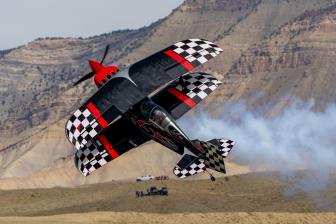Lowel’s Rifa eXchange System; Continuous Lighting Has Its Advantages
At a recent pro photo show I came across what I consider to be a unique innovation in small studio lighting--the Lowel Rifa eXchange System (#1), which is comprised of four self-contained softboxes that come in varying sizes. At 16x16" the Rifa eX 44 is the smallest and the Rifa eX 88 is the largest at 32x32". What makes this system special is the minimal time it takes to set up plus the fact that the lamp heads are equally fast to change between tungsten-halogen and daylight-fluorescent bulbs.
 |
|
|
Because each Rifa eX softbox comes as a self-contained unit they can be set
up and opened ready for use in less than a minute. Depending on what type of
bulb you wish to use, 125w to 1000w tungsten halogen, or 27w to 65w daylight
fluorescent, it takes only another moment to attach the interchangeable lamp
head with a push and a twist.
What makes the Rifa eXchange System especially nice for a small studio, particularly
one in your home (see #2, my dining room table studio), is that the lights and
stands fold up compactly for storage. In fact, a set of three Rifa eX lights
with their stands folded will fit easily in the back of my coat closet (seen
to the left of the dining room table in #2). This also means they are easy to
transport for location work.
The softbox creates a particular style of lighting, one that is favored by many
commercial studios. It is the type of light you would find on an overcast day.
Overcast light creates its own fill that is particularly pleasing for portraits
and product photography. It is also pleasing for glamour, or beauty, photography.
If a more dramatic light is desired, then the softbox would not be the best
choice as it cannot be focused to create sharp relief or heavy shadows.
To use a softbox effectively it should be placed relatively close to the subject,
usually within 3-6 ft, depending on the size. Ideally the softbox used for the
key light should be larger than the subject. Large softboxes, such as the Rifa
eX 88 are good for evenly illuminating the subject without requiring a fill
light. Small softboxes make very effective hair and accent lights, and fill
when needed.
While continuous output lights are the only kind that can be used in the movie
industry or for making videos, strobe lighting is by far more popular with still
photographers. This is because tungsten-halogen bulbs, the most common form
of continuous output lights for still photography, generate a lot of heat and
draw a lot of power. Tungsten halogen also requires a very high wattage bulb
to achieve enough light to create a usable depth of field. This is not a problem
for tabletops where a long exposure can be used, or for studio portraiture where
the subject is sitting or standing still, but it is a limiting factor when the
subject is moving, as in a lot of fashion and glamour work.
The Rifa eXchange System is designed around continuous output lights. I am not
here to convince you to switch from strobe lighting to continuous output but
I will tell you the advantages. The first is obvious. If you ever want to make
a video you will need to use continuous output--you cannot tape a moving
sequence using strobes--that went out with Peter Max and the Pop movement
in the 1960s.
A less obvious advantage is the ability to see what you are going to get when
you light the subject. With strobe lights you are always guessing. With continuous
output you know. A simple light meter reading of the highlight and shadow values
will tell you if your lighting ratio is correct. If it is not, move the fill
light in or out. For this reason, continuous output is the best way to learn
lighting techniques as well.
Another advantage is that continuous light sources do not create the sudden
burst of light associated with strobes.
If you are doing portraiture in the studio or on location, this is less stressful
for the subject.
The ability of the Rifa eXchange System to use daylight-balanced fluorescents
is a big bonus for those who prefer to use continuous lighting. The fluorescents
use a fraction of the power of tungsten halogen and run cool. If you are working
in a small studio space, whether you are doing a still life or portrait, the
fluorescent lights are more comfortable to use, for both you and
your subject.
 |
|
|
The daylight-fluorescent bulbs used by Lowel are very close to 5500K. Look at the front panel of the eX 88 used as the key light in #2. Although I manipulated exposure, saturation, and sharpening in Adobe's Lightroom, I have not made any white balance correction to either the set image or the completed cover image seen in #3.
 |
|
|
- Log in or register to post comments

































